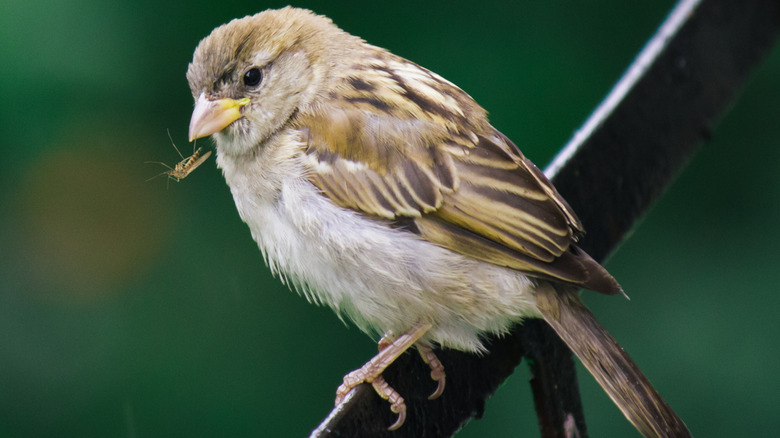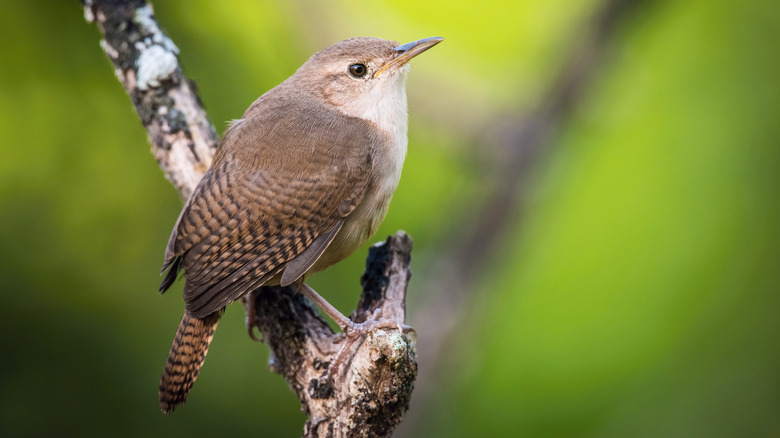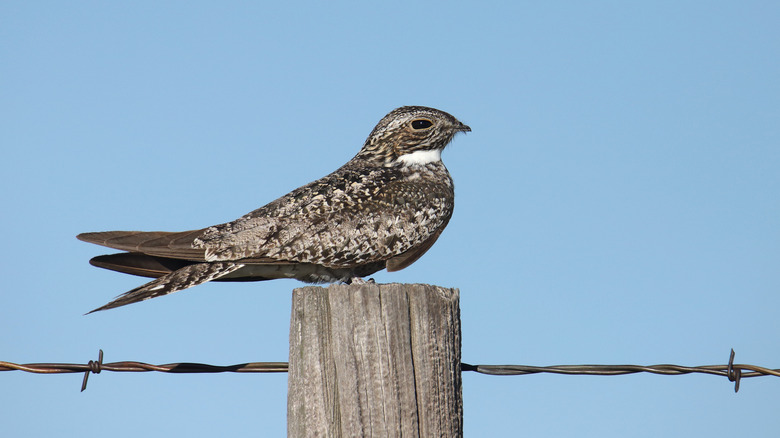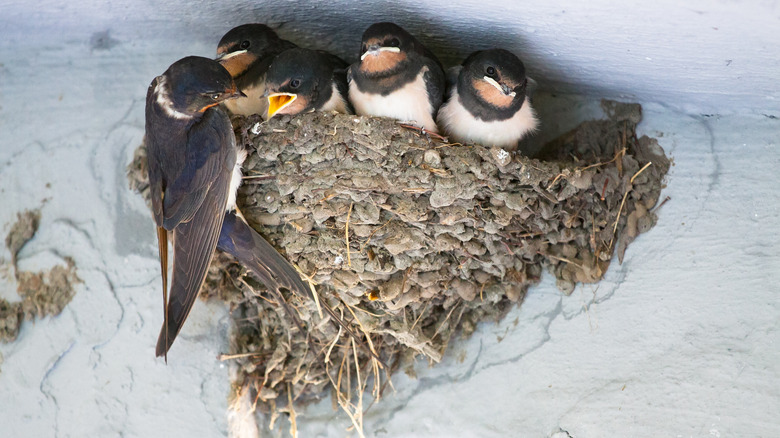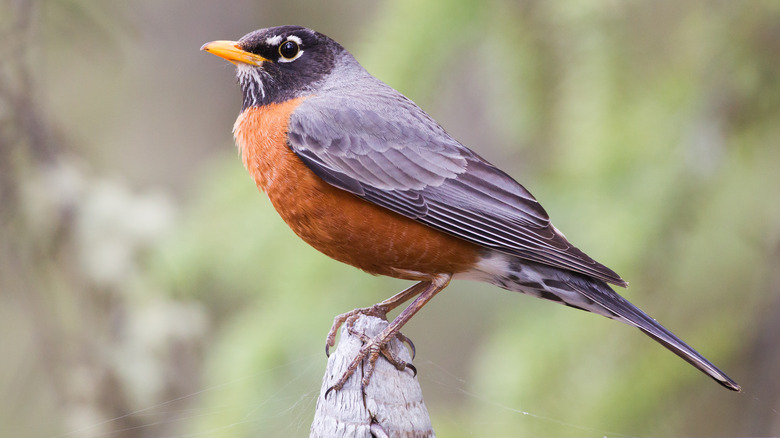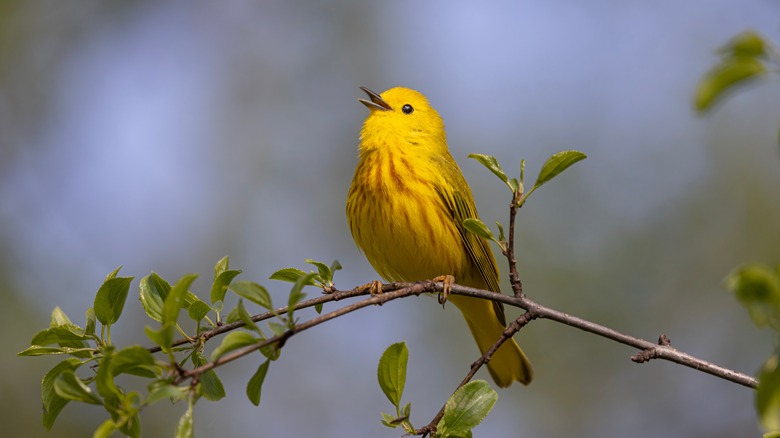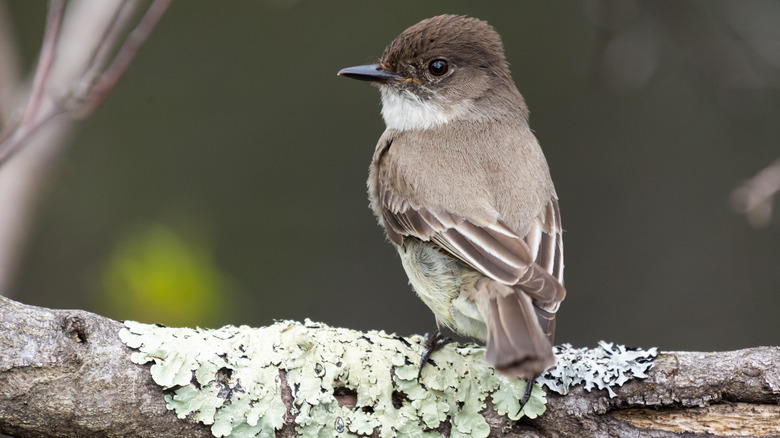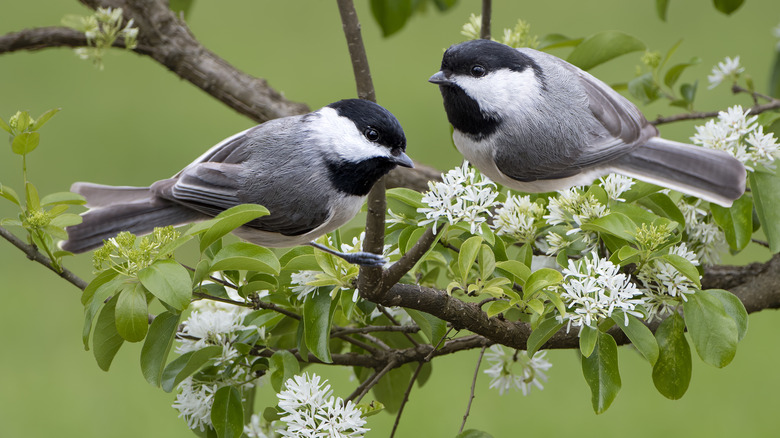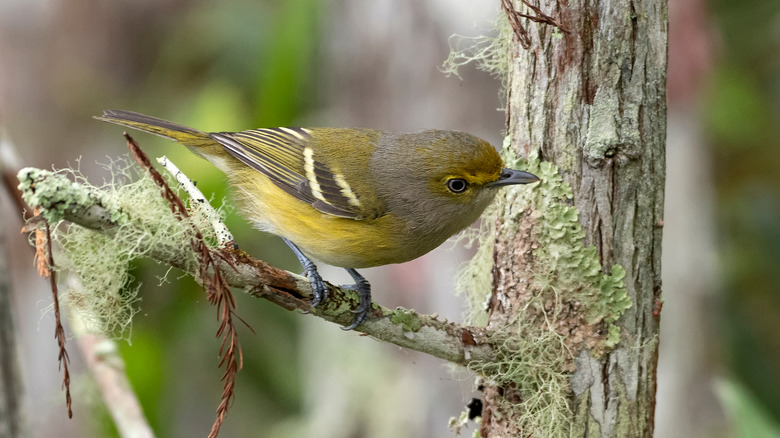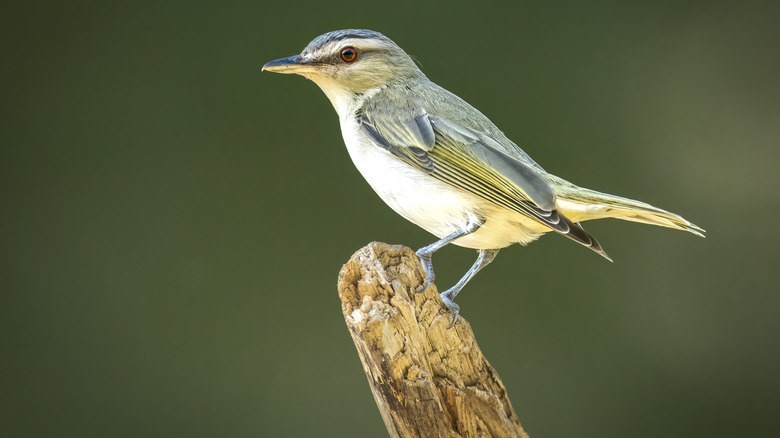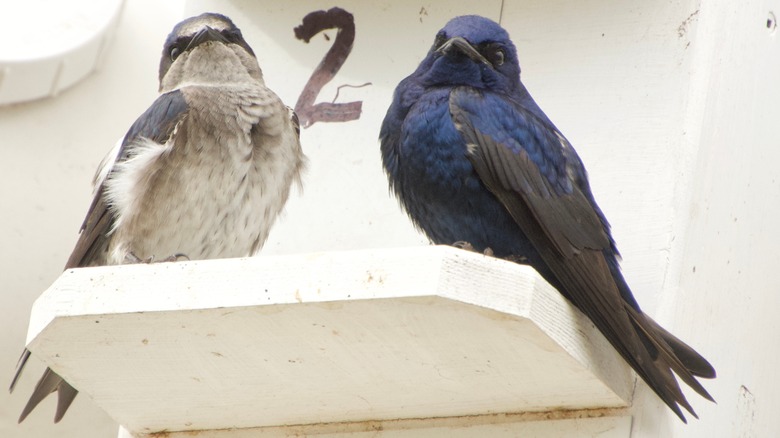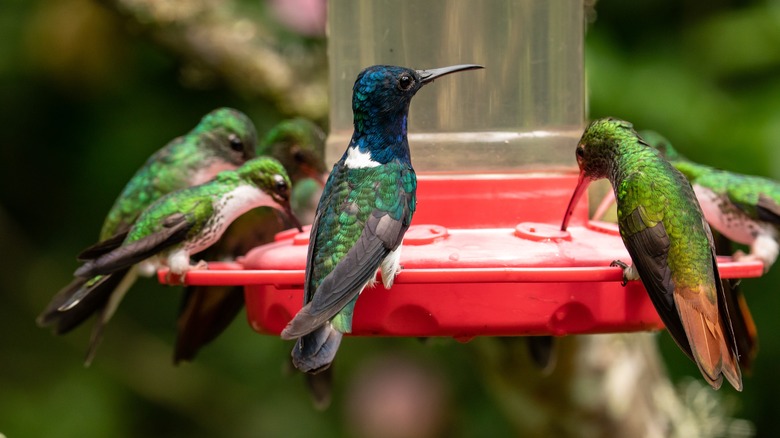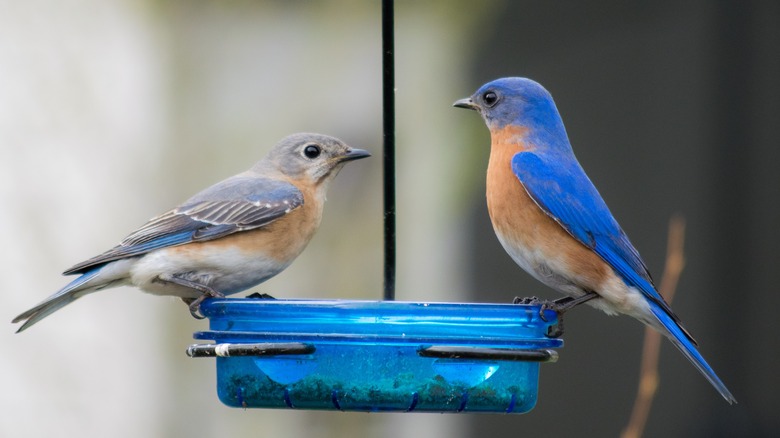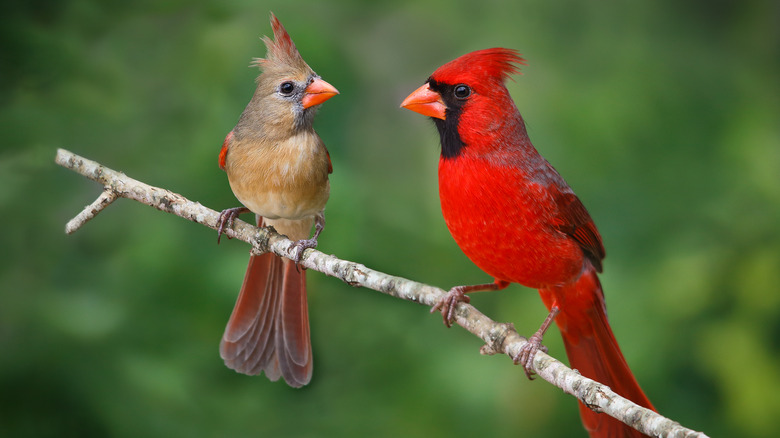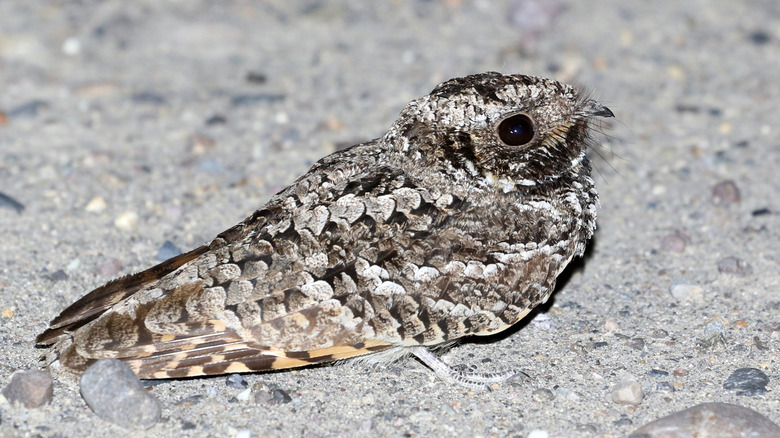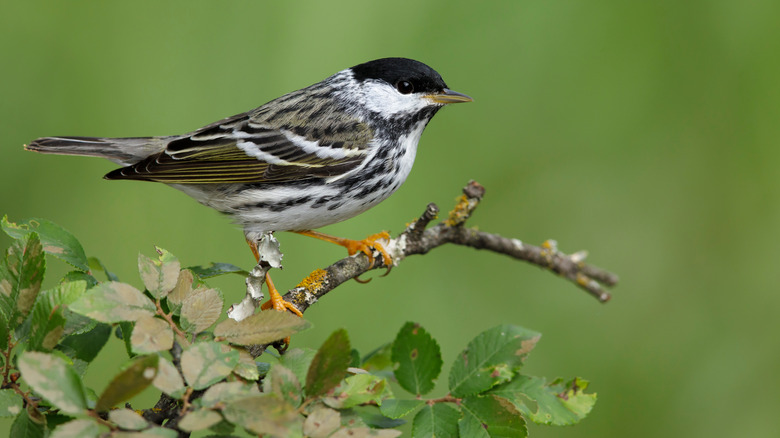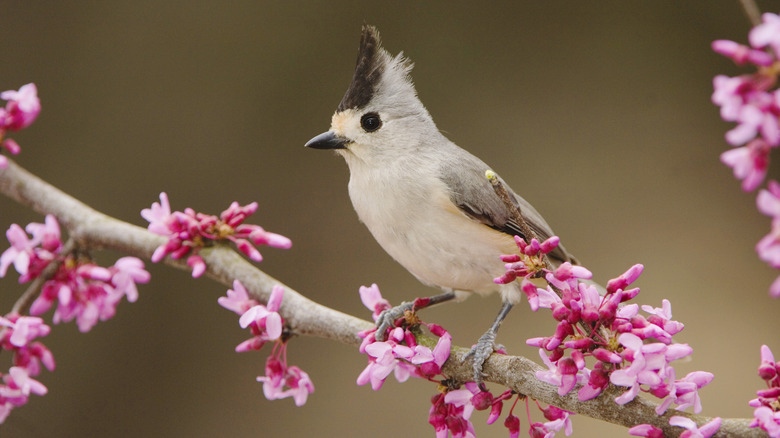16 Mosquito-Eating Birds To Attract To Your Yard
If you've ever swatted away at mosquitoes on a hot and humid summer day, you've probably wondered, "What is the point of these bugs?" Mosquitoes may just seem like a nuisance to us, but they are an important food source for many wild animals. If you're wondering how to repel bugs naturally, dragonflies, predacious insects, frogs, newts, turtles, and even bats love to eat mosquitoes and mosquito larvae. While these critters are great for catching mosquitoes, the problem is that they can be hard to attract to your backyard without the right environmental conditions. Luckily, there's another small animal that can help to make your summer season more enjoyable: birds.
Birds are much easier to invite into your yard, and many species have a great appetite for mosquitoes and mosquito larvae — plus other annoying garden pests. If you have swarms of mosquitoes that bother you during the daytime, birds are your best bet at dwindling their populations. Here are the bird species that are most helpful for mosquitoes and how to attract these birds to your yard.
1. House wren
Like many other kinds of wrens, the house wren (Troglodytes aedon) is a common backyard bird that lives throughout North, Central, and South America. These feisty little birds love to dine on mosquitoes and other small insects, and they're relatively easy to attract to your yard. To lure in house wrens, provide nesting boxes, limit your insecticide use, and set up plenty of water sources like fountains and bird baths.
2. Common nighthawk
The common nighthawk (Chordeiles minor) is a truly fascinating bird and one of the best to have around for managing mosquitoes. Nighthawks migrate south for winter but live all across North America during prime mosquito season. They can hunt during the day or night, scooping up insects mid-flight with their large mouths. Unfortunately, they can be a little tricky to attract, but they'll love your garden if it's full of insects and has plenty of level, flat surfaces for resting and nesting.
3. Barn swallows
Most people don't like the mess that barn swallows (Hirundo rustica) make, but a single barn swallow can eat about one insect every minute or up to 850 insects every day. They'll make quick work of your mosquito problem, especially during nesting season when there are even more mouths to feed. You can provide crushed eggshells, crushed oyster shells, and mud sources to attract barn swallows to your yard, where they'll likely nest in a barn, shed, or corner of your porch.
4. American robin
A classic favorite of backyard birdwatchers, American robins (Turdus migratorius) live year-round throughout most of North America. They love to eat all sorts of insects, including mosquitoes and other pests. You can attract robins to your yard by stocking the birdfeeder with mealworms and keeping piles of damp leaves where invertebrates will thrive. Robins will also snack on berries, so a berry bush or two will make your yard extra tempting.
5. Yellow warbler
The yellow warbler (Setophaga petechia) is another talented bird that can catch mosquitoes mid-flight but can be very skittish around humans. Warblers are almost entirely insectivorous, so the best way to attract them is with plenty of low-lying foliage, shrubs, flowers, and other places where they can stay hidden while hunting for insects. A quiet yard with oak trees, maple trees, and birdbaths may also increase your odds of hosting these helpful birds.
6. Eastern Phoebe
Eastern phoebes (Sayornis phoebe) are great for handling mosquitoes in warm climates because they'll stick around from early spring through late fall. Eastern phoebes feed on a range of berries and insects, so keeping plants like elderberry, wild grapes, or other fruiting vines will make your yard more appealing. Phoebes also love to perch above the landscape to survey the area for insects, so consider adding a few perches to your yard near the perimeters.
7. Carolina chickadee
In addition to being super cute, Carolina chickadees (Poecile carolinensis) are one of the easiest mosquito-eating birds to attract to your yard. They'll appreciate a wide variety of seeds and grains put out in feeders, from sunflower seeds to millet, shelled peanuts, and suet. During the nesting season, you can also support Carolina chickadees by setting up birdhouses and nesting boxes. Pet fur is also one of the best nest materials to leave out for birds like chickadees to be attracted to your space.
8. White-eyed vireo
White-eyed vireos (Vireo griseus) are common in the Southeastern United States. These songbirds eat a variety of berries and insects but almost exclusively opt for insects during the breeding season, especially flying insects like moths, butterflies, flies, and mosquitoes. White-eyed vireos love to search through shrubs and low branches, so adding a row of dense, natural shrubs should welcome them to your yard.
9. Red-eyed vireo
Red-eyed vireos (Vireo olivaceus) share some breeding territory with white-eyed vireos, but they also span upward along the eastern states and well into Canada. Like the white-eyed vireo, the red-eyed vireo can seriously help eliminate insects around your home. To attract these birds, plant fruiting shrubs and vines like elderberry or Virginia creeper and add low-lying foliage where they can hide. Avoid using insecticides as much as possible to provide a tempting food source for the vireos.
10. Purple martin
Purple martins (Progne subis) won't always catch a ton of mosquitoes if other insects are available, but they will help dwindle their populations. Mosquitoes tend to make up about 2% of the purple martin's diet. These birds love to live in colony houses, so the best way to bring them into your yard is to install a purple martin condo or gourd racks where multiple bird families can live together. Use white houses for the best result!
11. Hummingbirds
Most people assume that hummingbirds (Trochilidae Spp.) feed on nectar alone, but they are actually adept little mosquito hunters. Hummingbirds are fast enough to catch mosquitoes mid-air, and mosquitoes are the perfect bite-size snack for these tiny birds. Inviting hummingbirds into your yard is as simple as setting out a feeder, and homemade hummingbird nectar is surprisingly easy to make. You can also attract hummingbirds naturally by planting bee balm, coral bells, verbena, and other perennials.
12. Eastern bluebird
Widespread throughout eastern North America, eastern bluebirds (Sialia sialis) are excellent for controlling mosquitoes because they can eat up to 2,000 insects in a single day. To encourage them to hunt in your yard, set up perches where they can survey the area and offer mealworms in a dish feeder. Be forewarned: eastern bluebirds are highly territorial when it comes to nesting spaces, so they may deter other birds from entering your yard.
13. Northern cardinal
Northern cardinals (Cardinalis cardinalis) mostly prefer to eat seeds and grains, but they switch to primarily insects in the summer, including mosquitoes. During the summer, cardinals will also feed insects to their growing babies. Luckily, it's relatively easy to attract cardinals to your yard; they're likely one of the first songbirds you'll see at your feeder, especially if you offer safflower and sunflower seeds. They also don't migrate for winter, so once you've attracted a pair or two to your area, cardinals are likely to stick around all year.
14. Common poorwill
The common poorwill (Phalaenoptilus nuttallii) is a member of the nightjar family present throughout the western United States. Common poorwills look similar to nighthawks, but they are smaller and rounder. Their native Hopi name translates to "the sleeping one" because they often take short hibernation periods to preserve their energy and warmth. When they sense insects nearby, they'll swoop up from the ground to catch them in their wide mouths. Shrubs, leaves, and rocky or sandy clearings provide welcoming resting spaces for common poorwills.
15. Blackpoll warbler
Blackpoll warblers (Setophaga striata) usually hang out on branches, picking at insects on the bark or flitting into the air to catch flies and mosquitoes. Warblers are easily lured in by fresh water, so installing a bubbling fountain or birdbath is a smart way to encourage their presence in your yard. They also love forest edge habitats, so a yard with plenty of shrubs or trees bordering the lawn is ideal for these mosquito-eating birds.
16. Black-crested titmouse
Black-crested titmouses (Baeolophus atricristatus) love to eat all kinds of insects and are especially helpful for mosquitoes because they'll eat insect larvae as well! To bring more black-crested titmouses into your yard, provide feeders with seeds, fruits, and mealworms. Black-crested titmouses also love natural berries like Virginia creeper, blueberries, and mulberries. You can also provide birdhouses or nesting boxes during the nesting season.
